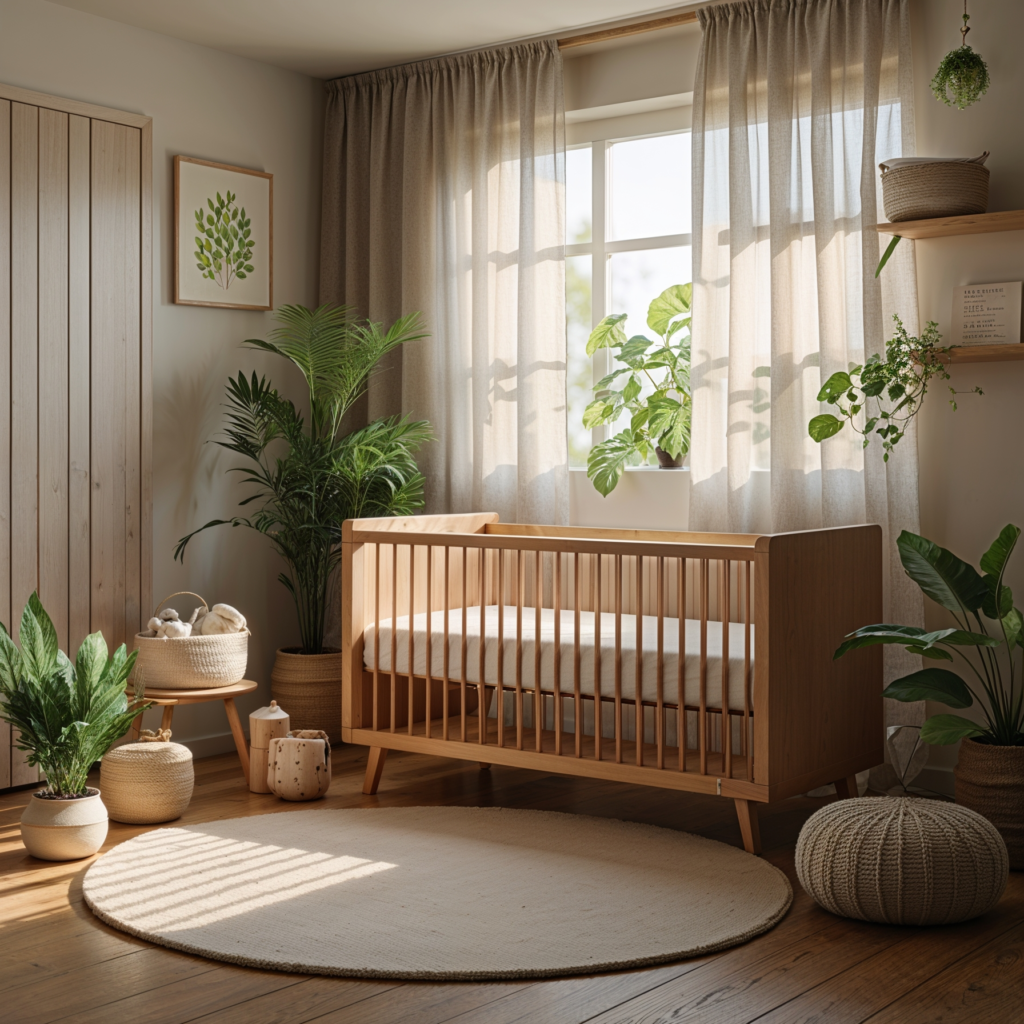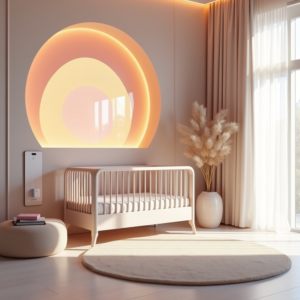Sustainable Nursery Materials: Eco-Friendly Choices for a Greener Baby Room

Creating a sustainable nursery is about more than just aesthetics—it’s about choosing eco-friendly, non-toxic materials that support your baby’s health while minimizing environmental impact. Many
conventional nursery products contain harmful chemicals, VOCs, and synthetic materials that contribute to indoor air pollution.
By selecting sustainable nursery materials, you can design a safe, toxin-free, and environmentally responsible space for your baby. This guide will help you find the best organic, renewable, and eco-conscious materials for every aspect of your nursery.
Why Choose Sustainable Nursery Materials?
✅ Better Indoor Air Quality – Avoids VOCs, formaldehyde, and flame retardants.
✅ Healthier for Babies – Reduces exposure to synthetic chemicals and allergens.
✅ Environmentally Friendly – Uses renewable, biodegradable, or upcycled materials.
✅ Longer-Lasting & Durable – High-quality sustainable materials often last beyond the baby years.
Best Sustainable Materials for a Green Nursery
1. Solid Wood (FSC-Certified) for Furniture
Why It’s Sustainable:
- FSC-certified wood ensures ethical forestry practices.
- Free from toxic glues and laminates found in pressed wood.
Best Uses:
🪵 Cribs
🪵 Changing tables
🪵 Dressers & shelving
🌱 Best Brands: Oeuf, Babyletto, Green Cradle
2. Organic Cotton for Bedding & Textiles
Why It’s Sustainable:
- GOTS-certified organic cotton is pesticide-free & biodegradable.
- Breathable, hypoallergenic, and gentle on sensitive baby skin.
Best Uses:
🛏️ Crib sheets
🛏️ Swaddles & blankets
🛏️ Nursing pillows
🌱 Best Brands: Coyuchi, Naturepedic, Burt’s Bees Baby
3. Wool for Rugs & Bedding
Why It’s Sustainable:
- Naturally flame-resistant (no need for chemical flame retardants).
- Regulates temperature and is hypoallergenic.
Best Uses:
🧶 Nursery rugs
🧶 Mattress toppers
🧶 Breathable crib pads
🌱 Best Brands: Lorena Canals, Holy Lamb Organics
4. Bamboo for Flooring & Textiles
Why It’s Sustainable:
- Rapidly renewable (grows up to 35 inches per day).
- Antibacterial & hypoallergenic properties.
Best Uses:
🌿 Flooring
🌿 Clothing
🌿 Swaddles
🌱 Best Brands: Nestig, Milkbarn, Aden + Anais
5. Non-Toxic Paint (VOC-Free & Natural) for Walls
Why It’s Sustainable:
- Free from VOCs, heavy metals, and formaldehyde.
- Helps prevent respiratory issues in babies.
Best Uses:
🎨 Walls & ceilings
🎨 Wooden nursery furniture
🌱 Best Brands: ECOS Paints, Clare Paint, Lullaby Paints
6. Recycled & Upcycled Materials for Decor
Why It’s Sustainable:
- Reduces waste and carbon footprint.
- Often handmade or locally sourced.
Best Uses:
🔄 Storage baskets
🔄 Wall art & decor
🔄 Upcycled wooden toys
🌱 Best Brands: Etsy Eco-Friendly Shops, Made Trade
How to Create a Fully Sustainable Nursery
1️⃣ Prioritize Certifications – Look for GOTS, Greenguard Gold, FSC, or OEKO-TEX labels.
2️⃣ Choose Timeless, Long-Lasting Pieces – Opt for convertible cribs & modular furniture.
3️⃣ Avoid Plastic Wherever Possible – Choose wood, bamboo, or metal alternatives.
4️⃣ Repurpose & Buy Secondhand – Consider vintage dressers, handmade decor, or upcycled finds.
5️⃣ Improve Air Quality – Add baby-safe plants like Areca Palm or Boston Fern.
Final Thoughts
A sustainable nursery isn’t just good for the environment—it’s healthier for your baby, too. By choosing organic, renewable, and non-toxic materials, you can create a safe, stylish, and eco-conscious space that supports your baby’s growth while reducing environmental impact.
Would you design a sustainable nursery? Share your thoughts below!





